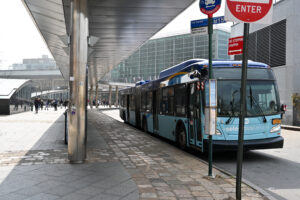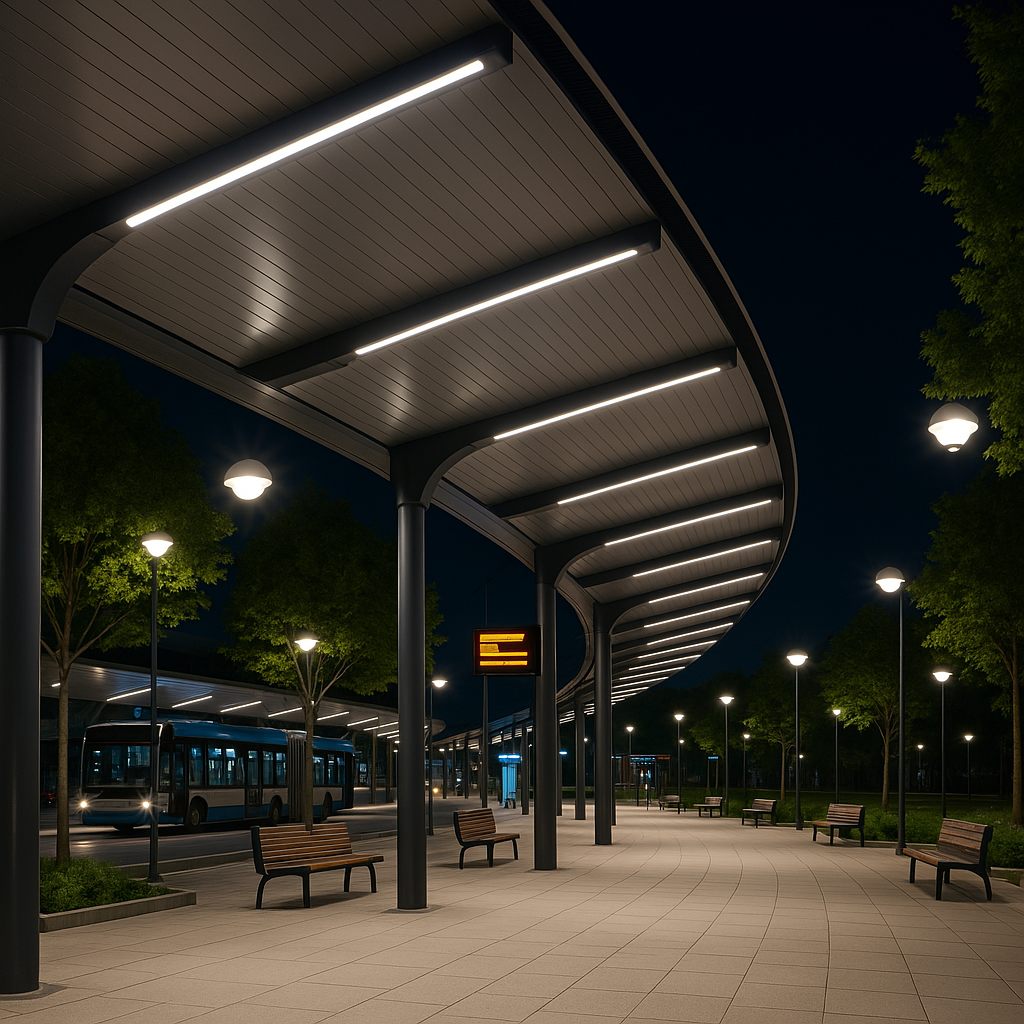Transit hubs are at the heart of urban life, connecting people and places. But they go beyond functionality; they shape how you feel about a commute. Ensuring public space safety and improving transit aesthetics are vital for creating welcoming, efficient spaces. Enter smart lighting for transit hubs, the game-changing solution for safety, style, and sustainability.
The Unique Challenges of Transit Hubs
Picture a dimly lit station late at night–uncomfortable, right? Transit hubs face very real challenges when it comes to both transit hub safety and atmosphere.
Here’s what often gets in the way:
- Poor nighttime visibility
- Commuter safety concerns
- Balancing functions with aesthetics
Smart lighting addresses all these concerns, creating brighter, safer environments that commuters actually enjoy.
Benefits of Smart Lighting for Transit Hubs
What if the lights around you weren’t just “on” or “off” but actually worked smarter, adapting to your needs and the environment? That’s the magic of smart lighting–bringing big benefits to transit hubs.
Improved Safety and Security

Smart lighting includes features that change the game for commuter safety:
- Motion sensors to brighten isolated areas when movement is detected.
- Adjustable brightness to suit different times of the day or weather conditions.
- Emergency lighting for quick response during power outages or critical situations.
With these features, passengers feel safer no matter the time of day.
Enhanced Commuter Experience
It’s amazing how much lighting impacts your mood and experience. Better visibility and LED transit lighting with thoughtful design can improve the usability and appeal of transit hubs, making them commuter-friendly.
Energy Efficiency and Cost Savings
With energy-efficient transit lighting, you get more than just bright lights–you save big in the long run:
- LED technology uses significantly less energy than traditional lighting, cutting costs.
- Automation, like turning off during less busy hours, minimizes energy waste. This mix of sustainability and savings hits the sweet spot for both functionality and the environment.
Transit-Specific Smart Lighting Solutions
Solutions for transit hubs aren’t one-size-fits-all–it’s all about customization! Here’s how dynamic lighting for transit hubs works wonders in creating spaces that are both smart and accessible:
- Tailor lighting schedules to adjust brightness for peak and off-peak hours–because a 9 a.m. rush hour and a 10 p.m. last bus look very different.
- Integration with smart urban lighting systems, like public Wi-Fi or surveillance cameras, turns lighting into a multi-tasker that can do so much more.
- Adaptive lighting controls to reduce glare, improve visibility, and make transit stations more usable for all.
It’s not just about pushing boundaries; it’s about adapting them to the real-world needs of commuters like you.
Real-World Applications of Smart Lighting in Transit Hubs
The impact of smart lighting solutions is clear in these real-life transformations:
- SMART (Southeast Michigan): Smart lighting systems in solar-powered shelters reduced maintenance costs by 60% and downtime by 40%, ensuring consistent lighting that improved commuter safety and satisfaction.
- Union Station (Washington D.C.): Smart technology ensured 100% uptime for digital displays, creating a secure and well-illuminated environment while maintaining operational efficiency in this historic transit hub.
- KCATA (Kansas City): Smart lighting reduced on-site visits by 70%, cut maintenance costs by 60%, and lowered customer complaints by 35%, ensuring transit hubs remained bright and reliable.
- Long Beach Transit (California): By optimizing solar-powered lighting, the system achieved 90% efficiency and 80% uptime, keeping stops safer and better illuminated for riders.
- OCTA (Orange County): Smart lighting and real-time displays at bus stops along Route 553 improved safety, reliability, and response times. With remote monitoring and instant issue alerts, OCTA minimized downtime and enhanced the rider experience across 23 locations.
These smart lighting case studies highlight how technology transforms transit hubs, boosting safety, sustainability, and commuter satisfaction while streamlining operations.
Steps to Implement Smart Lighting in Transit Hubs

Turning visions into reality isn’t as complicated as it sounds. Here’s a quick roadmap for transithun upgrades:
- Assess the current system
- Take a look at what’s working and what isn’t. Identify areas where lighting can enhance safety, aesthetics, or efficiency.
- Work with the experts
- Partnering with a trusted smart lighting provider allows you to create tailored modern transit solutions from product selection to installation.
- Prioritize maintenance
- Smart lighting is long-lasting, but regular maintenance helps ensure it keeps functioning at its best, delivering value for years to come.
It’s not just about installing new tech–it’s about doing it smartly.
Transforming Transit Hubs with Smart Lighting
With everything smart lighting offers–from increased transit safety and aesthetics to reduced energy costs–it’s clear the technology is redefining what transit hubs can be. They’re no longer just places to travel through; they’re becoming brighter, safer, and more efficient spaces for everyone to enjoy.
Curious how smart lighting can reshape your local transit hub? Don’t wait–explore your options today and see how this smart lighting transformation can pave the way to a brighter, better future for public space.
